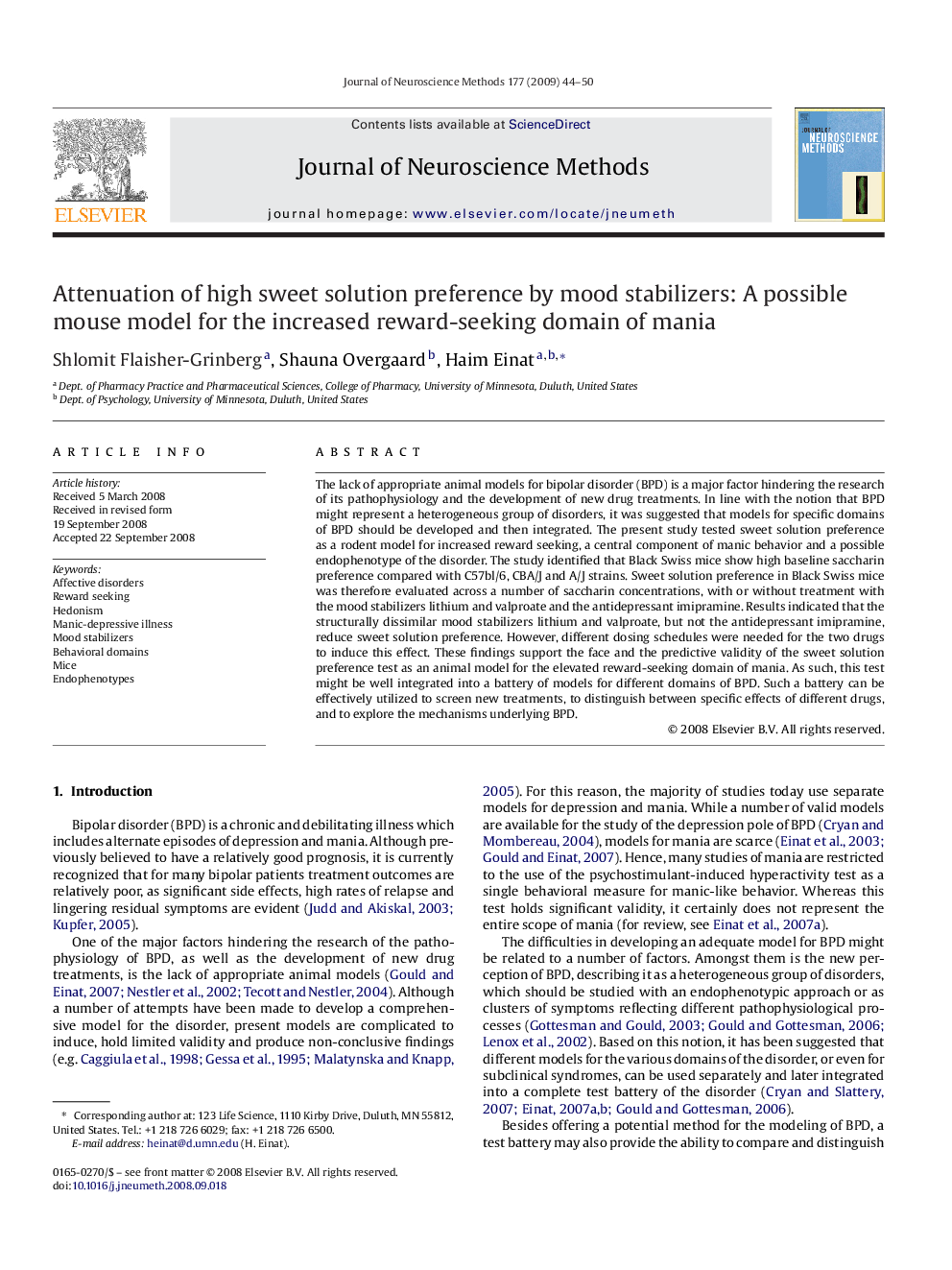| Article ID | Journal | Published Year | Pages | File Type |
|---|---|---|---|---|
| 4335971 | Journal of Neuroscience Methods | 2009 | 7 Pages |
The lack of appropriate animal models for bipolar disorder (BPD) is a major factor hindering the research of its pathophysiology and the development of new drug treatments. In line with the notion that BPD might represent a heterogeneous group of disorders, it was suggested that models for specific domains of BPD should be developed and then integrated. The present study tested sweet solution preference as a rodent model for increased reward seeking, a central component of manic behavior and a possible endophenotype of the disorder. The study identified that Black Swiss mice show high baseline saccharin preference compared with C57bl/6, CBA/J and A/J strains. Sweet solution preference in Black Swiss mice was therefore evaluated across a number of saccharin concentrations, with or without treatment with the mood stabilizers lithium and valproate and the antidepressant imipramine. Results indicated that the structurally dissimilar mood stabilizers lithium and valproate, but not the antidepressant imipramine, reduce sweet solution preference. However, different dosing schedules were needed for the two drugs to induce this effect. These findings support the face and the predictive validity of the sweet solution preference test as an animal model for the elevated reward-seeking domain of mania. As such, this test might be well integrated into a battery of models for different domains of BPD. Such a battery can be effectively utilized to screen new treatments, to distinguish between specific effects of different drugs, and to explore the mechanisms underlying BPD.
